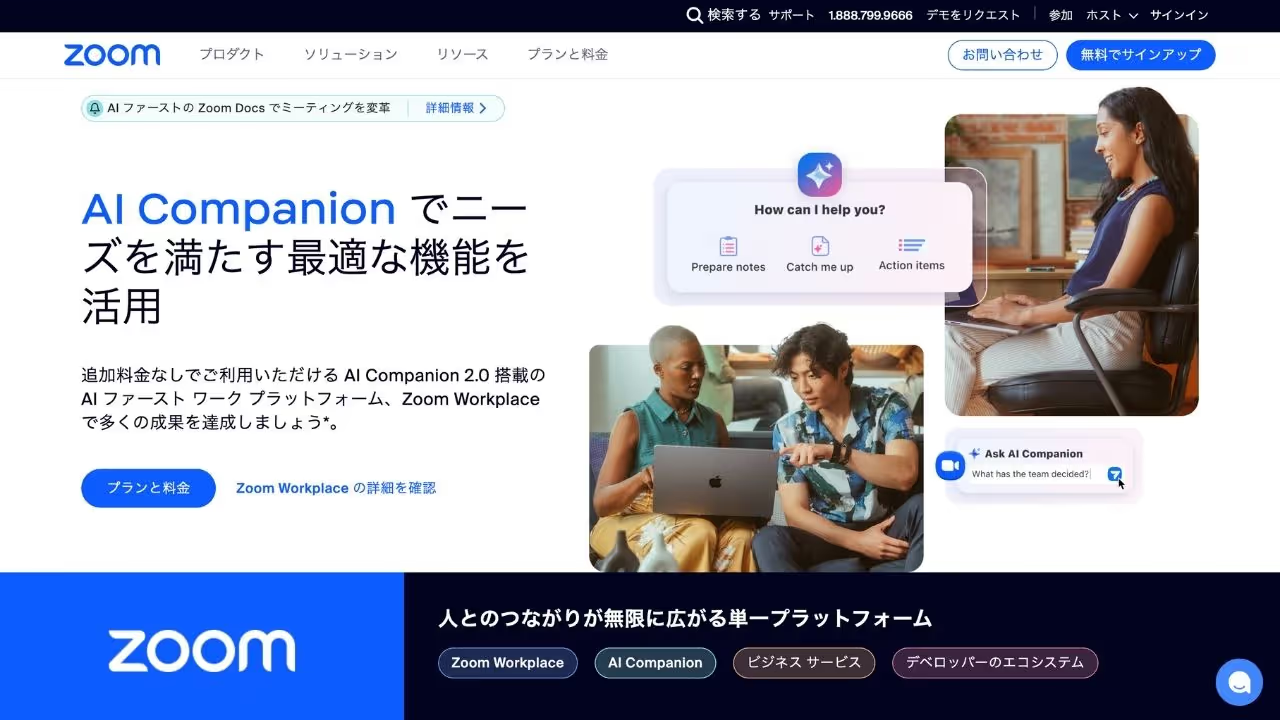Top 5 Video Conferencing Software in Japan

The COVID-19 pandemic has solidified video conferencing tools as essential components of communication across business, education, and personal spheres. With the widespread shift to remote work and online learning, these tools have become indispensable in professional and academic settings throughout Japan. Numerous organizations and schools have consequently adopted them to ensure quick and easy interaction and collaboration.
This article presents a ranking of popular video conferencing tools in Japan, evaluated based on user-friendliness, feature diversity, audio and video quality, and customization capabilities. While internationally developed tools dominate in both recognition and adoption rates, there are also Japanese-made options catering to local needs; but their presence remains comparatively smaller.
Video Conferencing Tools Ranked
- Google Meet
- Zoom Meetings
- Webex Meetings
- Microsoft Teams
- Skype
1. Google Meet

Source: Google Meet Homepage
Google Meet is a popular video conferencing platform known for its ease of use and convenience. It allows users to test their camera and audio settings before joining a meeting, ensuring a seamless experience. The fact that it's free to use is a major advantage—besides, users can access it from various devices without needing to download extra software. Google Meet also integrates well with other Google Office features, making it easy to share meeting links from Google Calendar or Gmail. With a range of virtual backgrounds available for customization, users can maintain their privacy while enjoying a comfortable meeting environment. These features make Google Meet a reliable video conferencing tool for both individuals and businesses.
2. Zoom Meetings

Source: Zoom Homepage
Zoom is particularly popular in business settings. At this point, most people are familiar with it, reflecting its widespread adoption. Its ease of use makes it a strong contender—participants can easily join meetings by simply clicking on a URL. Additionally, Zoom is regularly updated; it now includes a broadcast feature for breakout rooms, contributing to enhancing user experience by continually evolving. Image quality on Zoom is also excellent, allowing participants to clearly see others’ expressions, an important factor in remote meetings. These characteristics contribute to Zoom Meetings being widely supported for business, education, and personal use.
3. Webex Meetings

Source: Webex Homepage
Webex is known for providing high-quality video and audio for a stable video conferencing experience. Its user-friendly interface allows for intuitive operation, which makes it appealing to users. The virtual background feature is also robust; it easily blends people into their backgrounds while removing distractions effectively. Moreover, Webex includes noise-canceling technology that reduces background noise for clearer conversations. It also offers an automatic transcription feature that converts spoken content into text in real-time during meetings—streamlining the process of creating minutes and enhancing productivity overall. Thanks to these capabilities, Webex has become a trusted video conferencing tool among numerous companies and organizations.
4. Microsoft Teams

Source: Microsoft Teams Homepage
Microsoft Teams is highly favored among business users due to its integration with other Microsoft applications. For example, its compatibility with Outlook enables smooth workflows by integrating email communications and calendar management directly into Teams—facilitating chat, calls, and meeting scheduling. Communication within Teams allows users to transition easily from chat to calls or video conferences without interruptions, strengthening information exchange among team members. This capability greatly enhances collaboration efficiency and significantly improves productivity in remote work environments.
5. Skype

Source: Skype Homepage
Skype stands out as a convenient option: it can be used for free, without requiring the other party to have an account. It offers high-quality voice calls that provide clear audio, whether for meetings or everyday communication. One notable feature is the absence of advertisements displayed on management screens or during calls—this eliminates the worry of accidentally clicking on ads during conversations and allows users to maintain focus while communicating.
Previously, companies often had to travel for meetings; however, using Skype was a pioneer in making web conferencing possible, which resulted in significant reductions in travel time and expenses associated with such trips. This change allows for better time management, greatly enhancing overall business efficiency.
Conclusion
In Japan and elsewhere, the popularity of video conferencing tools has been on the rise, influenced by the recent pandemic as well as government-led initiatives promoting remote work. These tools effectively help to reduce commuting time and support flexible working arrangements, contributing to increased productivity and improved work-life balance.
When selecting video conferencing tools for business or education settings, factors such as usability, features, audio and video quality, as well as customization options are prioritized; thus it’s important to consider them carefully when deciding which one to adopt.






















